Shipper’s Letter of Instruction Template Guide
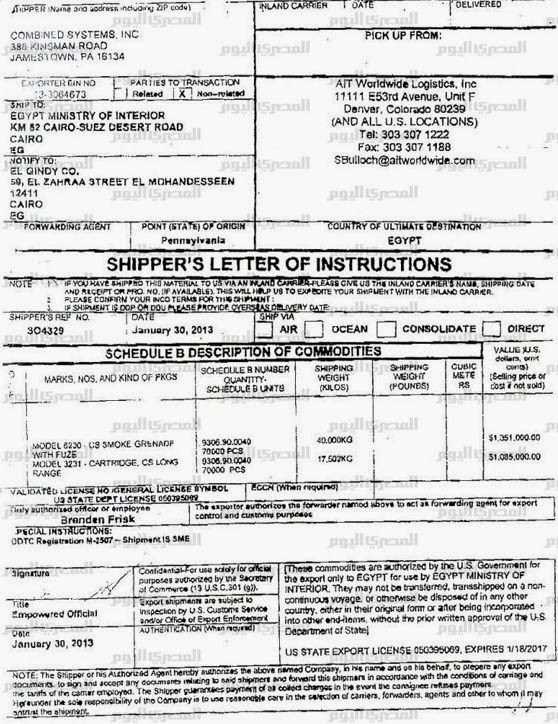
In the world of logistics, clear and precise communication is key to ensuring that goods reach their destination without issues. A well-structured document outlining the specifics of a shipment helps eliminate confusion between the sender, the carrier, and the receiving party. This ensures that every step of the shipping process is executed smoothly and in alignment with the sender’s intentions.
Whether you’re sending goods internationally or domestically, it’s important to provide all relevant details upfront. This type of paperwork not only clarifies the expectations of each involved party but also acts as a reference in case of any discrepancies or disputes. Understanding how to properly fill out such documents can significantly streamline operations and prevent costly errors.
In this guide, we will walk you through how to create an efficient shipping document, focusing on its crucial components and how they contribute to a seamless transportation process. A well-prepared form will improve communication, reduce risks, and facilitate a hassle-free delivery.
Shipper’s Letter of Instruction Overview
In the logistics and shipping industry, clear and detailed communication is vital for ensuring the correct handling and transport of goods. A specific document serves as the primary tool for providing the necessary details to carriers, allowing them to understand the sender’s exact requirements and manage the transportation accordingly. This form is essential in avoiding mistakes and ensuring the smooth execution of all logistics processes.
The primary goal of such a document is to provide instructions and specifications that are vital for the shipment, including details like the destination, cargo handling, and delivery expectations. It serves as a key reference for all parties involved, ensuring there is no ambiguity in the process. Properly outlining the necessary details on this form reduces the risk of errors and delays, promoting efficiency throughout the shipping procedure.
Key Information to Include
| Detail | Description |
|---|---|
| Sender Information | Name, address, and contact details of the person sending the goods. |
| Receiver Information | Details of the recipient, including their contact and delivery address. |
| Cargo Details | Description of the goods being transported, including weight, dimensions, and packaging type. |
| Transport Method | Instructions on how the goods should be handled, whether by air, sea, or land. |
| Special Requirements | Any additional instructions, such as temperature control, fragile handling, or specific delivery times. |
Importance of Clear Communication
Accurate and comprehensive documentation ensures that the entire supply chain is aligned and that the cargo is handled according to the sender’s specifications. Missing or unclear details could lead to significant delays, added costs, and even damage to the goods. By providing all necessary instructions upfront, both the sender and carrier can work together to avoid any unforeseen challenges.
Key Elements of a Shipping Instruction
When preparing a document for a shipment, it’s crucial to include all relevant details that will ensure the safe and efficient delivery of goods. This form serves as the primary communication tool between the sender, the carrier, and the recipient, outlining the necessary actions and specifications for transport. Every element included should serve a clear purpose to avoid any potential errors or delays in the shipping process.
Several important components need to be addressed in the document to guarantee smooth logistics. These include specific information about the sender and receiver, detailed descriptions of the cargo, transport preferences, and any special handling requirements. Each of these elements contributes to the accuracy of the shipping process, reducing the risk of miscommunication and ensuring that the goods arrive on time and in good condition.
Key elements of this form generally include:
- Sender and Recipient Details: Information such as names, addresses, and contact numbers.
- Cargo Information: A detailed description of the goods, including quantity, weight, and packaging type.
- Shipping Method: The preferred transport route and method, whether by air, sea, or land.
- Special Handling Instructions: Specific requirements like temperature control, fragile handling, or restricted access.
- Customs and Regulatory Details: Any necessary documentation for customs clearance or compliance with regulations.
Incorporating these elements ensures that both the sender and carrier are on the same page, promoting efficiency and minimizing potential delays or misunderstandings during transit.
Why the Document Is Crucial for Shipping
Effective communication is at the heart of a successful shipping process. A well-prepared document plays a vital role in ensuring that the shipment is handled correctly from start to finish. It acts as a guide for the carrier, providing all necessary details and instructions that will guarantee the goods are transported efficiently and in accordance with the sender’s requirements.
Without such a document, misunderstandings and errors can arise, leading to delays, damaged goods, or incorrect deliveries. The clarity provided by this form helps all parties involved in the shipping process stay aligned, reducing the risk of costly mistakes. Furthermore, this document ensures that any special conditions or requirements are clearly outlined, facilitating smooth customs clearance and proper handling of the cargo.
Minimizing Errors and Delays
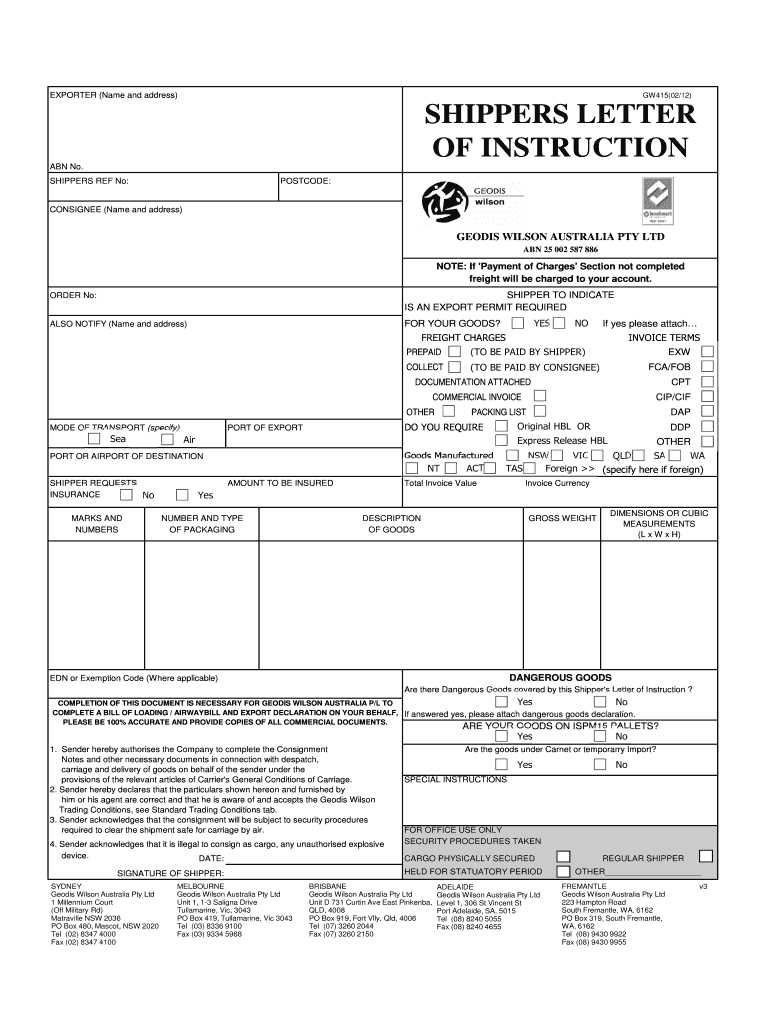
One of the main reasons this document is indispensable is its role in minimizing errors. By clearly stating all shipment details, the sender ensures that the carrier knows exactly how to handle the goods, from pickup to delivery. Whether it’s special packaging needs, temperature control, or fragile items, these instructions must be well-documented to avoid confusion. Without this clarity, goods could be mishandled, leading to delays or damage.
Streamlining Customs and Compliance
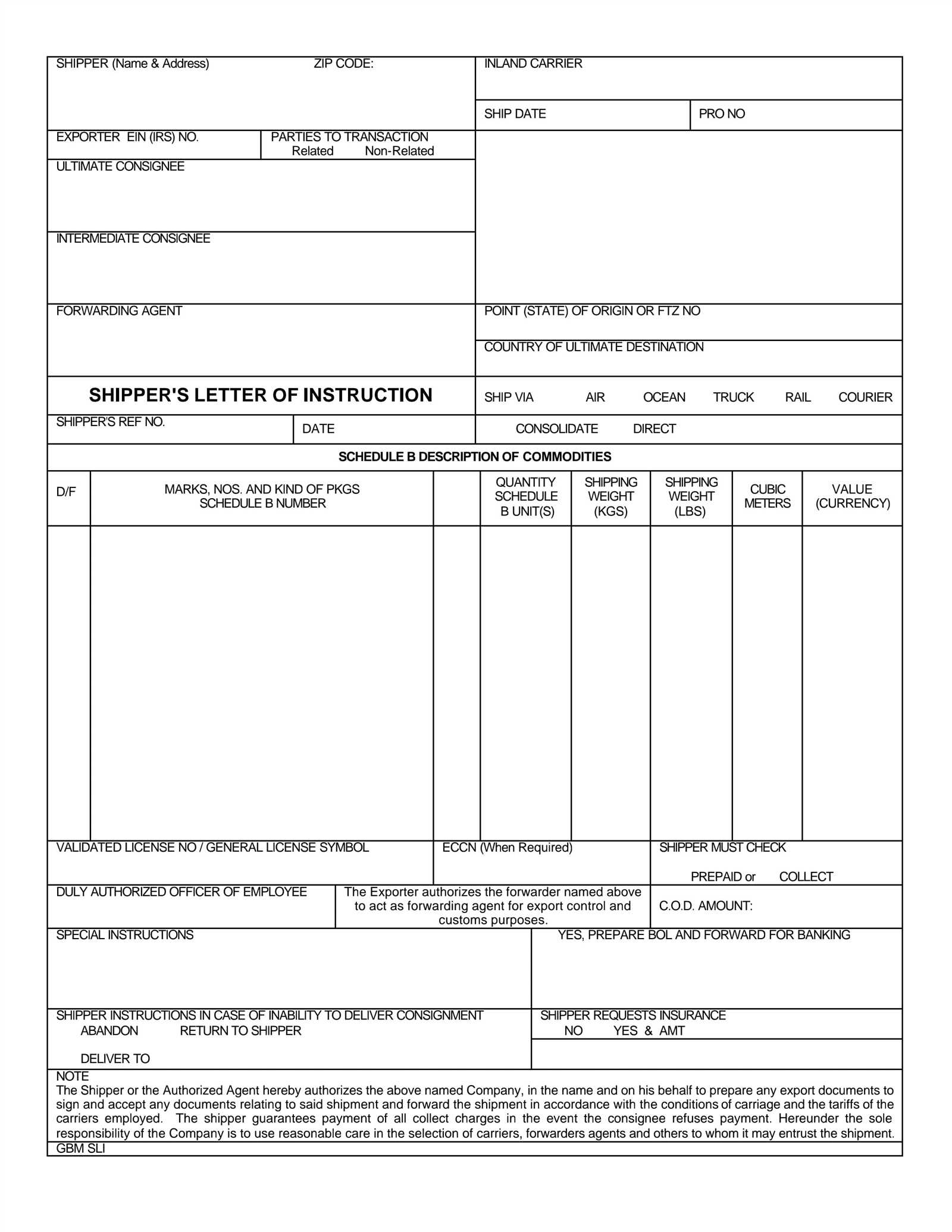
For international shipments, customs clearance can be a complex process. A detailed document helps ensure that all required information is provided, facilitating quicker processing through customs. It also assists in ensuring compliance with various regulations, helping to avoid costly fines or rejections at customs. Properly documenting the shipment’s details reduces the chances of delays due to missing or incorrect paperwork.
Common Mistakes in Shipping Instructions
When preparing shipping documents, even minor errors can lead to significant issues such as delays, increased costs, or damaged goods. It’s essential to provide accurate and detailed information, as unclear or incomplete instructions can confuse the carrier and disrupt the entire transport process. Understanding the most common mistakes in shipping documentation can help ensure that shipments are handled smoothly and efficiently.
Several errors are frequently encountered when filling out these forms, each of which can cause unnecessary complications. The most common issues typically involve incomplete or ambiguous information, miscommunication about delivery expectations, or failure to specify special handling requirements. These mistakes can lead to confusion, incorrect deliveries, or additional charges.
Common Mistakes to Avoid
- Incomplete Sender or Recipient Information: Missing contact details or addresses can cause delays in the shipping process.
- Ambiguous Cargo Descriptions: Lack of clarity regarding the type, weight, or packaging of the goods can lead to improper handling or even rejection.
- Failure to Include Special Handling Instructions: Not specifying temperature control, fragile goods, or restricted access can lead to mishandling or damage during transit.
- Incorrect Customs Documentation: Omitting or improperly filling out required customs forms can delay shipments at border crossings.
- Confusion in Delivery Terms: Vague delivery timeframes or incorrect delivery terms can result in the goods not reaching the intended destination on time.
How to Prevent These Errors
To avoid these common mistakes, double-check all the provided details before finalizing the shipment. Make sure that all necessary information is clear and precise, including addresses, contact numbers, and special requirements. Additionally, confirm that the cargo description is detailed enough for the carrier to handle the goods properly. Keeping these factors in mind will ensure smoother shipping processes and help avoid unnecessary delays or complications.
How to Customize Your Document
Customizing shipping paperwork is crucial to ensure that it meets the specific needs of each shipment. A one-size-fits-all approach rarely works in logistics, as different shipments may require distinct handling instructions, transport methods, or documentation. Tailoring the document to the particular requirements of each shipment ensures that all involved parties, from the sender to the carrier, have the exact details needed to complete the process smoothly.
When modifying the form, focus on adding or adjusting key sections that directly relate to the cargo, the shipment’s route, or any special considerations. Each customization should address unique aspects of the shipment to avoid any miscommunication or unnecessary delays.
Steps to Modify the Document
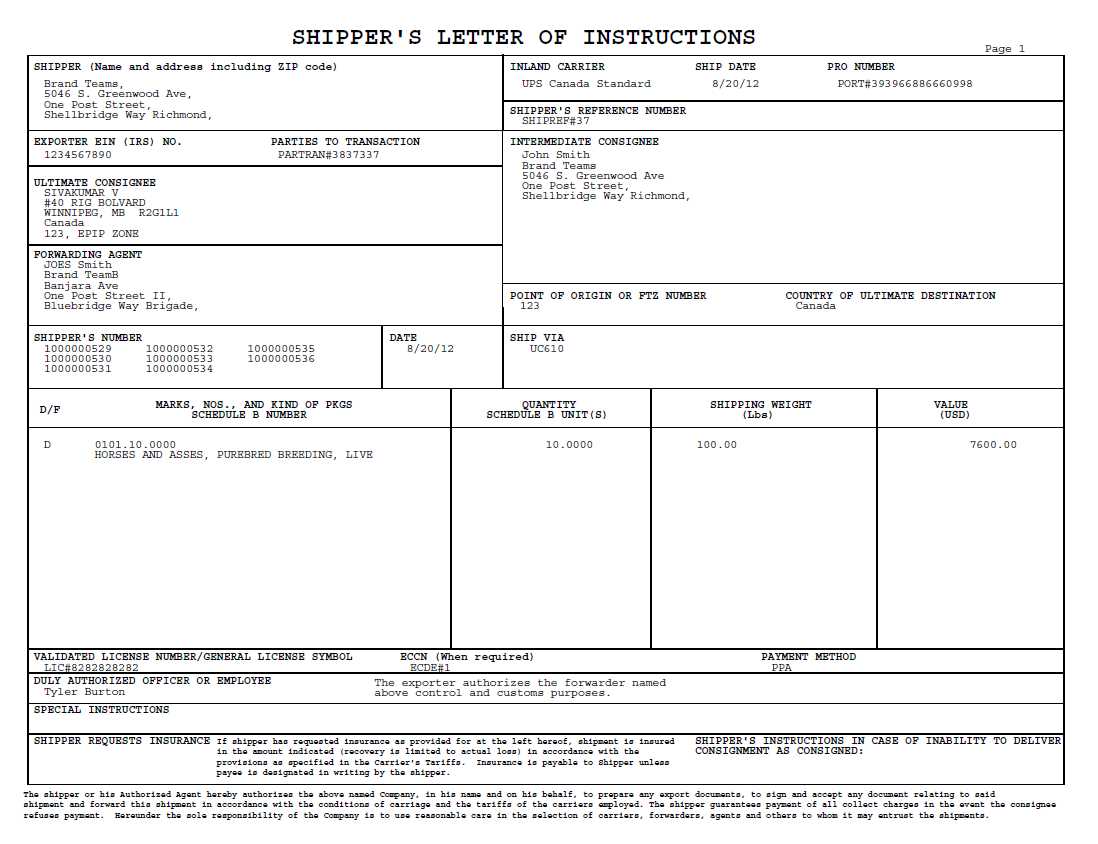
- Adjust the Sender and Recipient Information: Ensure that contact details, including phone numbers and addresses, are accurate and up-to-date.
- Include Detailed Cargo Descriptions: Clearly outline the type, quantity, weight, and packaging of the items being shipped to avoid confusion.
- Specify Special Handling Requirements: If the goods require temperature control, fragile handling, or any other special conditions, include these instructions clearly.
- Define the Transport Method: Tailor the shipping method (air, sea, or land) and ensure that the proper route and carrier are selected based on the shipment’s requirements.
- Clarify Delivery Expectations: Include specific delivery dates, times, or any time-sensitive conditions to avoid delays.
Ensuring Accuracy and Consistency
To avoid any errors, always review the customized document before sending it. Verify that all details are correct and align with the shipment’s requirements. Inconsistent or incorrect information could lead to delays or mistakes in the shipping process. By focusing on clarity and accuracy in every section, you can ensure a smooth shipping experience.
Best Practices for Efficient Communication
Clear and effective communication is essential in shipping and logistics. Ensuring that all involved parties–sellers, carriers, and recipients–are on the same page helps prevent confusion and reduces the risk of errors. By following a few key practices, you can streamline communication and ensure the smooth and timely movement of goods.
Efficient communication involves more than just sharing information; it’s about providing the right details, in the right format, at the right time. It also requires understanding the specific needs of each shipment and making sure those needs are clearly conveyed. This prevents misunderstandings and delays while improving overall efficiency.
Key Communication Tips
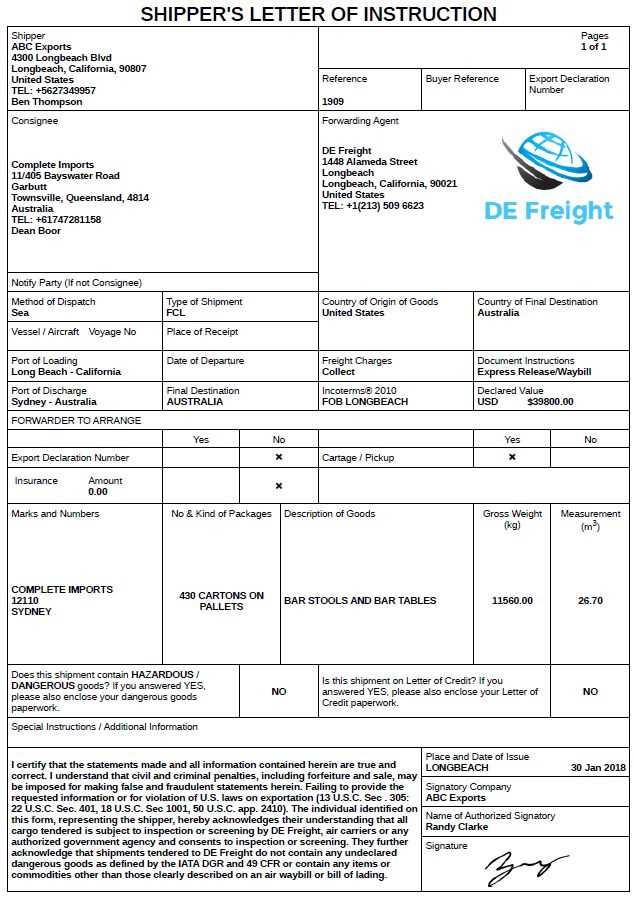
- Use Clear and Concise Language: Avoid jargon and ambiguity in all communication to ensure everyone understands the requirements.
- Provide Complete Information: Ensure that all necessary details–such as addresses, contact numbers, and cargo specifications–are included in every message.
- Set Expectations Early: Establish clear timelines, delivery expectations, and any special handling instructions at the start of the process.
- Regular Updates: Keep all parties informed about any changes or updates throughout the shipping process to minimize confusion.
- Double-Check Before Sending: Review all communications for accuracy to avoid costly mistakes and ensure consistency in messaging.
Improving Long-Term Communication Efficiency
To maintain effective communication in the long term, consider implementing standard practices for every shipment. This can include using a consistent format for all documents and ensuring that all team members are trained in clear communication techniques. By creating a system that minimizes errors and maximizes clarity, you can reduce delays and improve the overall efficiency of your shipping operations.